The IPNDV has compiled this unparalleled collection of resources and links on nuclear weapon disarmament monitoring and verification to help educate and build understanding of the complexity and challenges involved in verification. Understanding how the pieces of the nuclear enterprise fit together, and what the differences are between monitoring and verifying nuclear weapons, warhead dismantlement, and nuclear materials and components is essential to advancing the work of the Partnership as well as broader international progress on nuclear weapons reductions.
The resources in this collection are all unclassified and have been approved for public release and reprinting. All content is in English.
Related Initiatives
The IPNDV recognizes and builds off of the important contributions of previous verification initiatives, such as the U.S.-Russia Monitoring and Verification Experience, the U.S.-UK Program on Nonproliferation and Arms Control Technology, the UK-Norway Initiative on Nuclear Warhead Dismantlement Verification, and the Quad Nuclear Verification Partnership. The United Nations also recently convened a Group of Governmental Experts on Nuclear Disarmament Verification.
Arms Control Agreements, Demonstrations & Experiments
This section includes documents related to the Intermediate-Range Nuclear Forces (INF) Treaty and the Treaty between the United States of America and the Russian Federation on Measures for the Further Reduction and Limitation of Strategic Offensive Arms (New START), as well as experiments like the Black Sea Experiment, the UK-Norway Initiative, and the Trilateral Initiative.
Future Monitoring & Verification Challenges
This section includes documents that explore challenges that countries will likely face with future arms control and disarmament steps and how verification approaches might evolve to account for new sources of information and technologies, additional stakeholders, and issues such as cost and intrusiveness.
Warhead Confirmation & Radiation Measurements
This section discusses a number of technologies and approaches that could be used for warhead confirmation. The ability to measure and confirm the declared radiation characteristics of a treaty-limited item, may prove to be essential for meeting future verification objectives, and a substantial body of technical research exists on how to do so.
Information Protection & Information Barriers
This section focuses on the protection of sensitive information and different procedures, devices, and software that have been developed to protect sensitive information from unauthorized release, while at the same time allowing inspection and monitoring equipment to be certified and authenticated and verification information to be presented.
Chain of Custody, Tags, Seals & Tamper-Indicating Enclosures
This section explores issues associated with establishing and maintaining chain of custody for treaty-limited items, as well as different tags and seals that could be used to support monitoring and transparency activities. Chain of custody includes the process of establishing the authenticity or provenance of items, tracking their movements between facilities and confirming that they have not been altered in any way. A tag is any intrinsic characteristic, or applied feature, that identifies a particular item, such as a nuclear weapon or weapon canister. The simplest tag is a serial number or bar code. A seal is a tamper-indicating device that prevents undetected access. A seal need not prevent access; it need only record, in some permanent and unambiguous manner, that such access has occurred.



